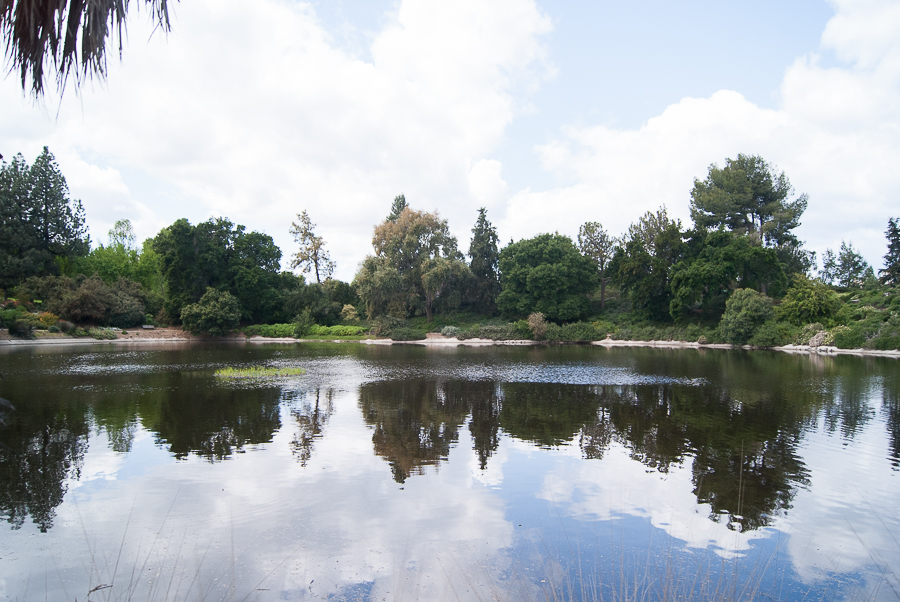
Waterway project is seeking to enhance Arboretum through creative means in phase four
A project to enhance the waterway in the Arboretum is currently underway. It seeks to improve water holding capacity and flow, to provide more wildlife habitat and to reduce the amount of algae build-up on the water’s surface.
“It is a big project,” said Nina Suzuki, the waterway steward at the Arboretum and a leader of the enhancement project.
Designed in four phases, the project is a massive undertaking that will take many years to complete.
Phase one began in June of 2017 in the eastern end of the Arboretum and was recently finished, Suzuki explained. The phase brought new, more accessible pathways along the waterway as well as many adjustments to the waterway itself. Sediment that accrued over the years at the bottom of the waterway was removed to increase water capacity. Native plants with strong root structures to hold soil together replaced broken rock gabions that were installed as erosion control measures many years ago. Weirs, low dams built into a river to regulate its flow, were installed in addition to pumps to improve water flow and to increase the levels of dissolved oxygen in the water.
Suzuki explained that all of these adjustments will be present in each distinct phase of the project, with the phases representing sections of the Arboretum that will be addressed one at a time. The second phase will begin sometime in 2019 at Spafford Lake.
The enhancement of waterflow is a significant part of the project as the Arboretum waterway is a static environment with little natural flow, explained Gregory Pasternack, a hydrologist at UC Davis. This allows for a lot of nutrient build-up, such as nitrogen, that also comes into the water from manure use on the surrounding grounds and waste from birds and other species in the Arboretum. There is no true water source, with the water only having a discharge point into the live Putah Creek, explained Suzuki.
“The waterway hasn’t been clean since it was cut off 80 years ago,” said Truman Young, a professor in the Plant Sciences Department who specializes in restoration.
Young referred to the historical relocation of the river channel due to recurrent flooding on campus and the damming of Lake Berryessa. This has turned what once was a natural river into a manmade one.
“As you see the waterway today, it’s not a functional stream setting,” Pasternack said. “It’s just an entirely artificial setting. That’s not not to say that a lot of important ecological things don’t happen there, but it’s not a natural environmental setting.”
This presents unique challenges to the waterway enhancement project. One way the team is attempting to address this is in phase four, which is unique in the project for its creation of a wetland environment in the western end of the Arboretum near the Putah Creek Lodge. Within this phase, the team will install floating islands that will help with the nutrient build-up issues of the waterway.
“The floating island functions like a wetland, where plants take up nutrients like nitrogen and phosphorus and use them to grow, which in turn means that there are less excess nutrients for undesirable algae to grow,” Suzuki said. “The shade provided by these plants and the floating island as a whole also reduces algae growth.”
The algae growth is notorious in the summer as a foul-smelling and sickly green covering on the waterway. It thrives in stagnant waters and is often found coupled in the Arboretum with duckweed, a California native plant that the project is also seeking to reduce with improved water flow and the floating islands.
“Duckweed has been a problem in the Waterway in the last few years because it can reproduce vegetatively very quickly,” Suzuki said. “This very tiny plant with two leaves and two roots that floats on the water can quickly take over the entire surface of a stagnant pond.”
While serving beneficial functions for the health of the waterway, the floating islands will also bring more resting places for the native turtles and various birds that live in the Arboretum. They also serve a aesthetically-oriented purpose, reinforcing the fact that the Arboretum is a park.
“All of our parks are probably playing the tension between wilderness and civilization,” Young said. “If we wanted just civilization, then we would have Times Square. What we have instead is our lawns, and golf courses, and our Arboretums; they give us a little bit of both wilderness and civilization, and we find comfort and refreshness from that mix.”
Written by: Matt Marcure — science@theaggie.org




